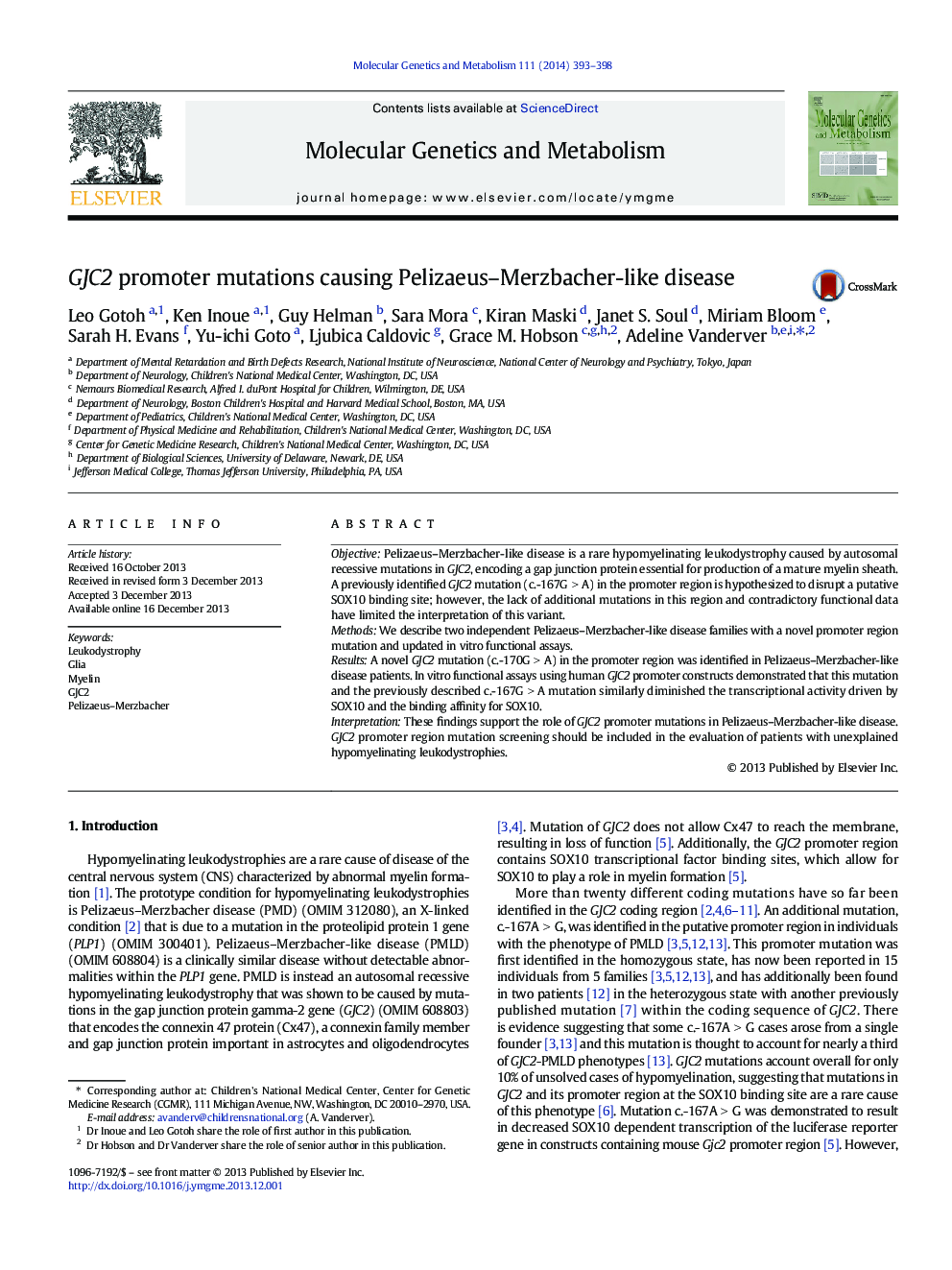| Article ID | Journal | Published Year | Pages | File Type |
|---|---|---|---|---|
| 1998421 | Molecular Genetics and Metabolism | 2014 | 6 Pages |
•A homozygous mutation in the GJC2 regulatory region was found in two cases of PMLD.•c.170A > G is the second promoter mutation found in the SOX10 binding site of GJC2.•Reduced transcription is shown by both mutations through a luciferase reporter assay.•PMLD-causing mutations may result in profound down-regulation of the GJC2 promoter.•We provide genetic confirmation of pathogenicity by promoter mutations in PMLD.
ObjectivePelizaeus–Merzbacher-like disease is a rare hypomyelinating leukodystrophy caused by autosomal recessive mutations in GJC2, encoding a gap junction protein essential for production of a mature myelin sheath. A previously identified GJC2 mutation (c.-167G > A) in the promoter region is hypothesized to disrupt a putative SOX10 binding site; however, the lack of additional mutations in this region and contradictory functional data have limited the interpretation of this variant.MethodsWe describe two independent Pelizaeus–Merzbacher-like disease families with a novel promoter region mutation and updated in vitro functional assays.ResultsA novel GJC2 mutation (c.-170G > A) in the promoter region was identified in Pelizaeus–Merzbacher-like disease patients. In vitro functional assays using human GJC2 promoter constructs demonstrated that this mutation and the previously described c.-167G > A mutation similarly diminished the transcriptional activity driven by SOX10 and the binding affinity for SOX10.InterpretationThese findings support the role of GJC2 promoter mutations in Pelizaeus–Merzbacher-like disease. GJC2 promoter region mutation screening should be included in the evaluation of patients with unexplained hypomyelinating leukodystrophies.
